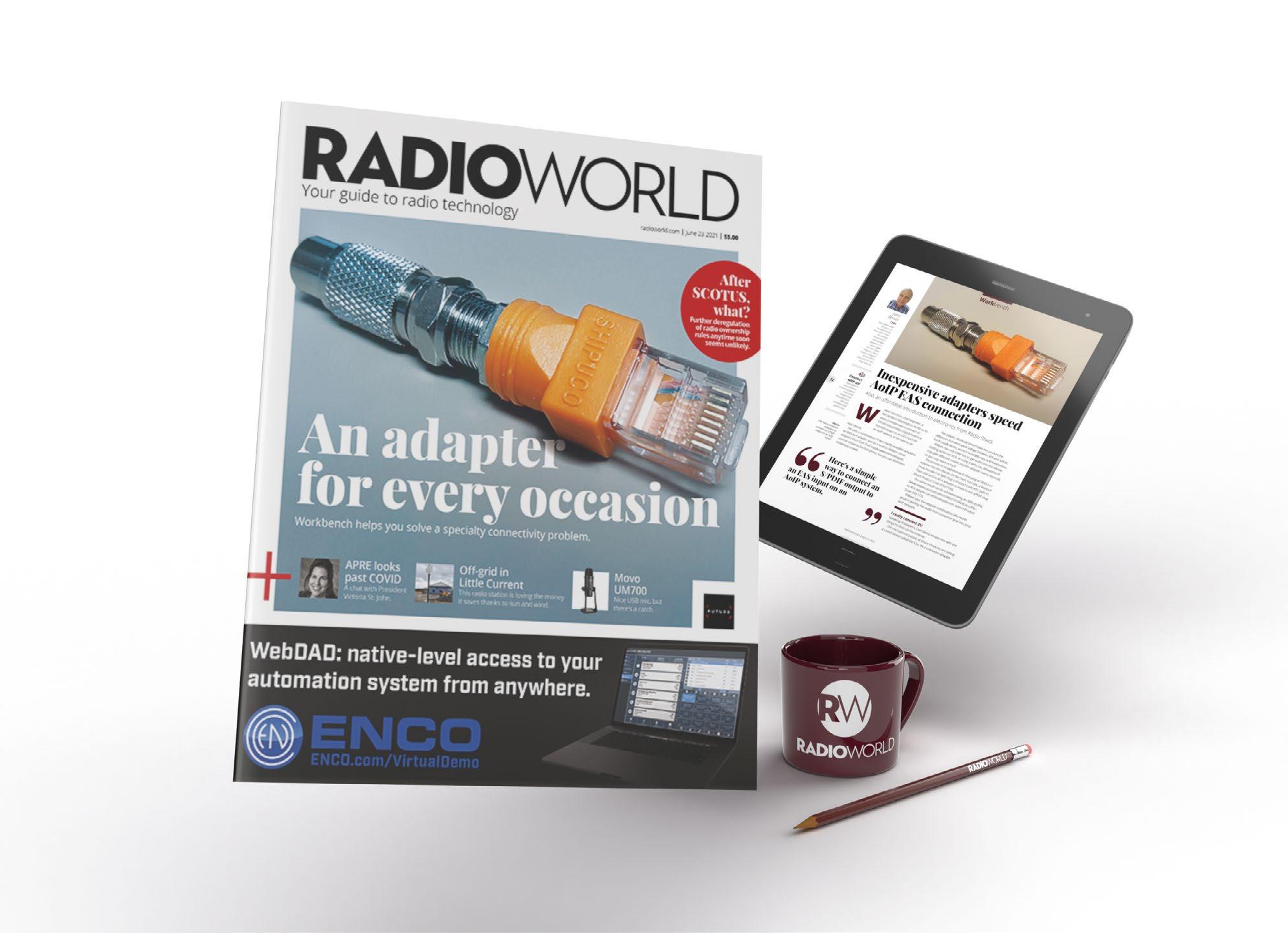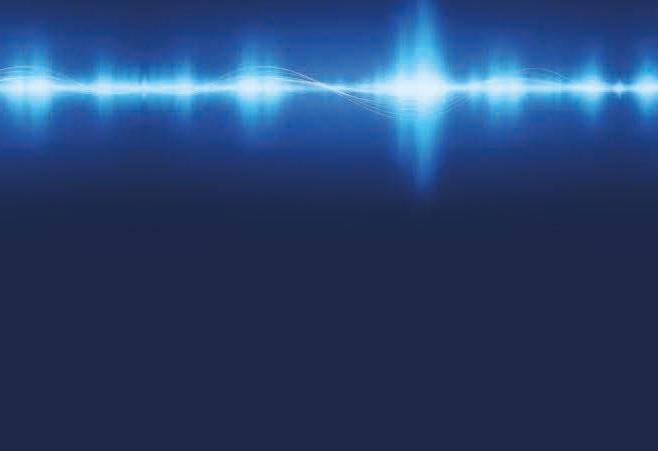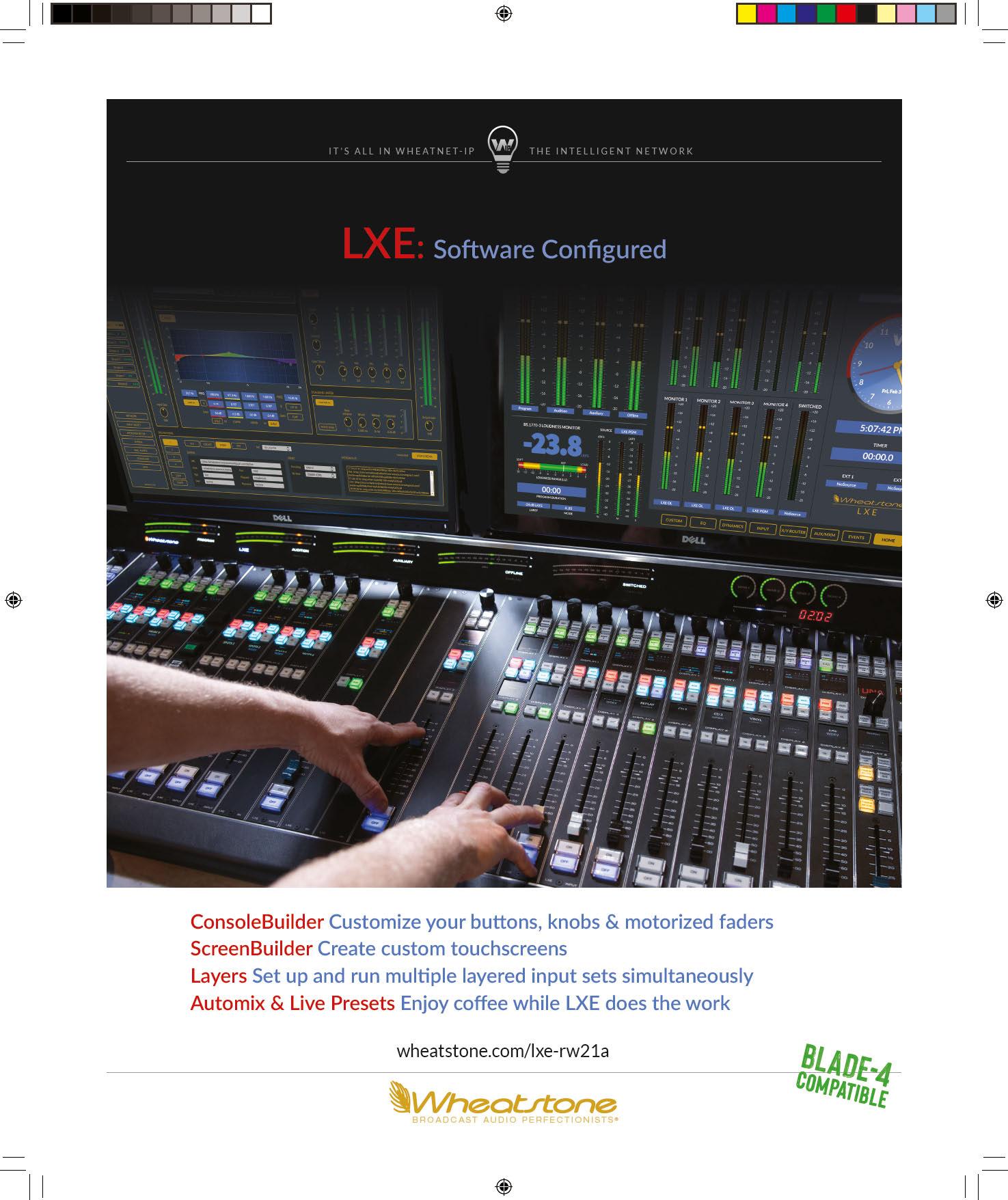
3 minute read
stations. As we document in every issue, the challenges that have faced radio stations, executives and engineers over those 25 years have been remarkable ... but so is radio’s capability for reinvention. It has been exhilarating to guide Radio World’s content through a similar process, in partnership with
a problem that had nothing to do with CATV.
But where did this odd adapter come from in the first place?
The story starts with someone who wanted to install a TV set in a room that had nothing in the wall but Ethernet category wiring. There was no RG-6 coaxial wiring in the room.
With a pair of these adapters, you take RF from the CATV distribution amp and send it on one of the twisted pair inside the category cable.
In the room, another adapter takes it to an F connector that is attached to the TV. The 100-ohm twisted pair is close enough to the 75-ohm RG-6 impedance for this to work. Obviously, use a direct category cable connection. Don’t expect to shove RF through a network router!
Looking closely at the picture in our original article, it seems only the first pair is used. Moving consumer S/PDIF to professional AES with this adapter solved a problem inexpensively.
Dale’s plant makes partial use of audio over IP but has a lot of gear with analog I/O. He was never a big fan of dongles with twin XLR connectors hanging off the back of a dense array of rack gear. He finds it easier to modify a LAN cable — cut off one end, fan out the four pairs and solder the left/right pairs to a couple of XLRs that plug into the analog gear.
Use some tubing or heat shrink to make it pretty and more durable. Running balanced analog through 10 or 20 feet of unshielded category cable is fine.
If you use the hanging dongle method, you’ll be soldering an XLR at each end of the interconnection. Dale’s method requires an XLR only at the analog equipment end, and results in less wiring congestion.
HD MULTICAST+MULTICAST+


Combined Importer/Exporter with optional Orban audio cards
to install a TV set in a room with no coaxial wiring. ”
Less dense rack wiring can save time troubleshooting in the future.
Note that LAN patch cables use stranded wire instead of solid if you’re concerned about flexure.
Someday, everything will be AoIPready or shrunken into a piece of software inside a server. For now, we all have to deal with analog at the edges of our facilities.
Ouch ouch ouch
Dale “Squeak” Porray, AD7K, really liked Bill Weeks’ submission about the LED replacement for fluorescent Circline bulbs but says the website link we gave may not have been right in some versions of the story. It is www.mpja. com for Marlin P. Jones Associates.
The site now has over 60 YouTube videos of the products they sell. Squeak has been dealing with them
Above
Dale Lamm wasn’t sure at first that we were serious with our tip about the AoIP EAS adapter in the June 23 issue. since the 1970s and says they’re a fine company.
Since we also were talking about CAT5/6 Ethernet cables, watch the site’s YouTube video about the LAN RJ Plug Crimp Tool. It has a built-in cable continuity testerto check cables you’ve crimped, all for under $30. One notable feature is a ratchet release pin, very important!
Once while helping an engineer crimp cables, we took a break, but as we chatted, he inadvertently put his index finger in the jaws of the crimping tool and pressed down. CLICK — the jaws latched. And there was no release.
I drove him to the emergency room to get his finger freed. Since witnessing that, I’ve made sure that any latching pliers or crimping tools I use have a release pin. You can’t be too careful.










